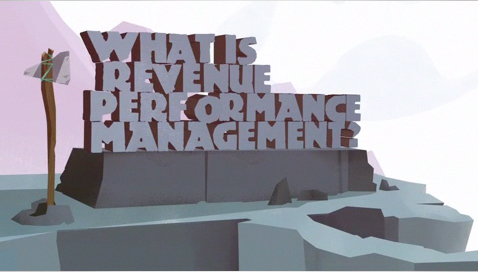This cool video put together by Eloqua explains what Revenue Performance is, we have also included the transcript below the video.
WHAT IS REVENUE PERFORMANCE MANAGEMENT?
Since the dawn of industry, marketing has been about appealing to people’s emotions.
From memorable TV spots to guerrilla advertising, it’s always been more an art than a science.
Thanks to new technologies including trackable media, companies have the ability to apply rigorous metrics to what was once a matter of taste.
Now marketing can be just as accountable as other core business functions, like accounting and operations.
Sales and marketing are most companies’ greatest costs, yet few have any real idea of how this spending impacts business growth.
Revenue growth is the top priority of most CEOs, leading to higher expectations for all business functions, but in a recent study, 87% of marketers said their current techniques are not hitting performance targets.
With better insight into sales and marketing activities, it’s estimated that companies could gain an extra 10% in total annual sales.
In other words, marketing is no longer just an art form; it also needs to show that it’s an active generator of revenue, requiring sales and marketing teams to work together like never before.
Smart companies are implementing scientific methods to examine how their sales and marketing dollars are spent.
The science these smart companies are turning to is called “Revenue Performance Management,” and it’s helped these organizations outpace the S&P 500 Index by 78%.
Using Revenue Performance Management methodologies, companies evaluate sales and marketing performance and forecast future revenue by tracking and adjusting five essential metrics … in real time.
First, companies evaluate the REACH of a given activity.
Marketers must ask themselves, ‘How many people are we able to contact … and how can we make that number grow?’
Second, companies need to know the VALUE of each stage in the sales pipeline…
… how many prospects are at each particular stage, and how much is each likely to spend.
Accurately tracking pipeline value is a key step in reliable forecasting.
Third is CONVERSION, which ensures continued progress throughout each stage of the sales cycle.
By measuring the rate at which leads move through the pipeline, companies can work out if there are any bottlenecks and where.
The next important concept is VELOCITY, involving the accurate measurement of time taken for a prospect to become a customer, including how much time was spent at each intermediate stage.
Now more than ever, marketers are figuring out ways to accelerate the process…
…and how to improve forecasting so it is no longer a guessing game.
Finally, RETURN is often the “missing piece” of sales and marketing.
By implementing reporting for the whole sales cycle…
…companies can provide a clear cost of specific marketing and sales activities compared to the revenue they bring in.
Marketing is still an art, but new technology allows business leaders to apply science to it like never before.
Revenue Performance Management is not just the future of marketing, it’s also the future of business.






